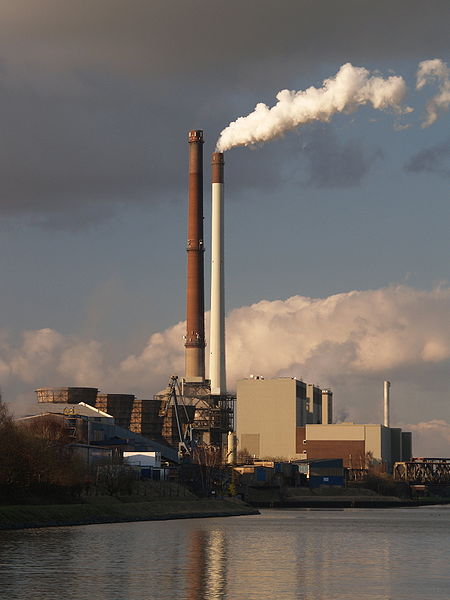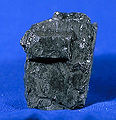Thoughts on President Obama’s Clean Energy Standard proposal
 In his State of the Union speech on January 25, President Barack Obama advocated a Clean Energy Standard that includes natural gas as well as renewables, nuclear and "clean coal." In my previous post on Clean Energy Standards, I said that if the standard were expanded to include natural gas generation, then the required clean energy percentage would have to be increased substantially in order for the policy to remain meaningful, particularly if gas is given "full credit" (i.e., is treated no differently than non-emitting generation).
In his State of the Union speech on January 25, President Barack Obama advocated a Clean Energy Standard that includes natural gas as well as renewables, nuclear and "clean coal." In my previous post on Clean Energy Standards, I said that if the standard were expanded to include natural gas generation, then the required clean energy percentage would have to be increased substantially in order for the policy to remain meaningful, particularly if gas is given "full credit" (i.e., is treated no differently than non-emitting generation).
Well, I must say that Obama's stated goal of 80 percent "clean" energy generation by 2035 exceeds even the target I suggested in my last post (of 80 percent by 2050). This is an encouraging sign. Some questions remain, however:
1) What does a "goal" of 80 percent clean generation mean?  Is any actual mechanism for causing this clean generation to be built being proposed? Is the president proposing a legally binding standard, such as the one that was in the Waxman-Markey bill? Will there be financial incentives (that, hopefully, apply equally to all non-emitting sources)? In other words, will this have any teeth (at all)? If not, the "policy" is essentially useless.
Is any actual mechanism for causing this clean generation to be built being proposed? Is the president proposing a legally binding standard, such as the one that was in the Waxman-Markey bill? Will there be financial incentives (that, hopefully, apply equally to all non-emitting sources)? In other words, will this have any teeth (at all)? If not, the "policy" is essentially useless.
The fact that many in Congress are resisting even this more inclusive policy, since it may raise electricity costs (even a little bit), is very disconcerting. If there was no cost associated with using clean (vs. old, dirty) energy, there would be no need for any type of policy in the first place, as utilities would do it on their own. Some legislators seem to place zero value on clean air, or reducing CO2 emissions; a view that does not help nuclear at all.
2) What is meant by "clean coal"? One would hope that this  means coal with CO2 sequestration. At a minimum, one would think it at least means gasified coal (IGCC, integrated gasification combined cycle) as well as CO2 capture projects. If the definition is any looser than that (i.e., if it basically calls modern, state-of-the-art, conventional coal plants "clean"), then the policy would be largely useless.
means coal with CO2 sequestration. At a minimum, one would think it at least means gasified coal (IGCC, integrated gasification combined cycle) as well as CO2 capture projects. If the definition is any looser than that (i.e., if it basically calls modern, state-of-the-art, conventional coal plants "clean"), then the policy would be largely useless.
Given the high percentage (80 percent), and the fact that it applies to all (not just new) generation, I suppose that even if the loose definition were applied, it would at least result in the closure of most of the old, ultra-dirty coal plants, since it would require the level of "non-clean" coal generation to decrease. Such a policy would not help nuclear, however, since it would still be in competition with gas and conventional coal for new generation. It would also do little to reduce CO2 emissions, although it would reduce air pollution.
3) How will natural gas generation be treated in the standard? Will gas be simply included in the standard, and treated no differently than non-emitting sources , or will it somehow receive only "partial credit," due to the fact that it still emits about 50 percent as much CO2 as coal?*
 Even if gas is given "full credit," the policy will still have an impact. The Energy Information Administration projects that with no change in policy, the percentage of electricity generation from conventional coal will drop only to 43 percent in 2035, from 45 percent today. This policy would require that percentage to drop to 20 percent instead. Thus, conventional coal will be replaced, but with respect to what it is replaced with, nuclear and renewables would be given no advantage at all versus gas.
Even if gas is given "full credit," the policy will still have an impact. The Energy Information Administration projects that with no change in policy, the percentage of electricity generation from conventional coal will drop only to 43 percent in 2035, from 45 percent today. This policy would require that percentage to drop to 20 percent instead. Thus, conventional coal will be replaced, but with respect to what it is replaced with, nuclear and renewables would be given no advantage at all versus gas.
If gas were to be given "half credit," I suppose only half of total gas generation in the United States in 2035 would count towards the 80 percent goal. Such a policy would be more justified (given that gas is not emissions-free) and it would give nuclear and renewables an advantage over gas since they would provide twice as much progress towards the goal (per kW-hr of new generation). It would also outright require that a significant fraction of electricity comes from non-emitting sources such as nuclear or renewables. Even if there were no conventional coal generation at all, one would have to have at least 60 percent non-emitting sources and no more than 40 percent gas to meet the requirements of the standard (60 + 40/2 = 80).
If this proposed policy has real teeth, has a strict definition of what "clean coal" is, and gives gas only partial credit toward the 80 percent clean energy goal, it will be enormously beneficial to nuclear. If the answers to the above questions go the other way, however, the benefits for nuclear will be much smaller.
*A document that gives more details on the proposal was subsequently released by the White House. This document states that the proposal's intention is for gas to be given some kind of "partial credit" toward the clean energy goal. Whether gas will get partial credit in any final legislation that passes remains an open question.

Hopf
Jim Hopf is a senior nuclear engineer at EnergySolutions, with 20 years' experience in shielding and criticality analysis and design for spent fuel dry storage and transportation systems. He has been involved in nuclear advocacy for 10 years, and is a member of the ANS Public Information Committee. He is a regular contributor to the ANS Nuclear Cafe.

